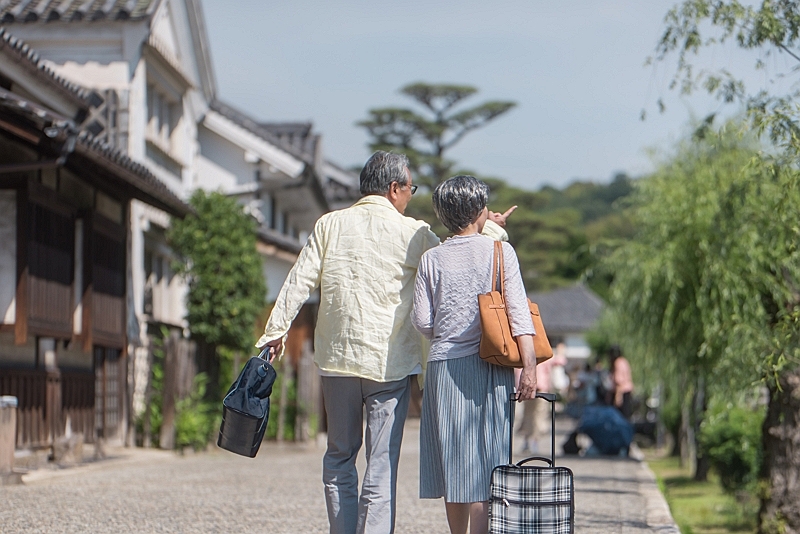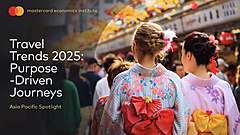
Japan has partially restarted receiving leisure-purpose international visitors since June 10 2022. This seems to be the first step toward full-scale open of the inbound travel market, though entries a day is still capped at 20,000.
AndBeyondTokyo, a tour operator of Japan, has begun preparing for receiving a group from U.S., but Chika Kuroiwa, AndBeyondTokyo CEO, said, “I feel as if I have joined a hurdles competition.”
Tour operator and travelers run helter-skelter
AndBeyondTokyo is supposed to receive a group of seven travelers living in San Francisco, who has planned to visit Japan since more than one year ago. Initially, they wished visiting to Japan last summer, but they gave up because the pandemic was not calmed down.
All of them are retired senior travelers, who wish to visit Japan again while their health are still good. It will be the third trip to Japan for them, and they plan to tour Tohoku region to see summer local festivals from July 27 2022.
For them, Kuroiwa first completed online registrations of all of the tour members on ERFS or the Entrants, Returnees Follow-up System on June 10, the reopening day and then sent the information to San Francisco immediately to encourage them to acquire visa, which is a new condition for foreign visitors amid the pandemic.
It was not, however, easy. Visa application in person requires an appointment, and Japanese consulate basically accepts an application by mail only. A few representatives of the group took a chance to go to the consulate in San Francisco, but they were refused by security staff at that time.
According to the San Francisco Consulate website, it takes five business days at least to acquire a visa after receiving an application by mail. This is one of the big hurdles for travelers from U.S. because of visa waiver for them before the pandemic. Even so, all of the seven travelers are eager to visit Japan again, Kuroiwa said.
Mailing their applications finally, they found that they can acquire visas by the end of June and visit Japan on July 27 as they have planned.
“As a tour operator to receive international visitors, we have been in trouble in several cases because of no comprehensive timeline for reopening the inbound travel market. If the government draws up and discloses detailed steps, both tour operators and travelers can advance the preparations more easily,” Kuroiwa said. “We should have known a guideline a week earlier at least.” Japan Tourism Agency announced a guideline for reception of international travelers on June 7, just three days before the reopening day.
Ambiguous guideline confuses tour operators
The guideline calls for international visitors to wear masks during their trips, although the government said it is no longer required outside for Japanese people. “I doubt that we can ask for them to wear masks as a rule,” Kuroiwa said. “They are coming to Japan all the way after clearing hurdles. If I request them to wear masks, I worry that they do not feel welcomed by Japanese people.”
Another ambiguous condition is that only a tour with a tour conductor is approved. Kuroiwa said, “As the definition is not clear, misunderstandings may happen.”
The guideline dose not define how may applicants a tour should be. In fact, a tour can be approved, regardless of an individual traveler or a group traveler, if it is escorted by a person who manages a tour. The interpretation is not known yet globally.
Kuroiwa said, “I think there are individual luxury travelers who want to travel in Japan with full-escort arrangement. With the ambiguous guideline, Japan is losing a chance to earn money.”
Also, the guideline calls for a tour conductor to manage and keep travel records of tour participants, but Kuroiwa said, “If a participant becomes infected, I wonder how long a tour conductor must take care, until the next negative?”
AndBeyondTokyo社代表取締役の黒岩千賀氏
Visitors under the current conditions are royal customers
All of the regulations will be lifted without doubt. Kuroiwa, however, emhasized, “Inbound travelers even under the current regulations are real fans of Japan and royal customers for Japan.”
Japan focused on the inbound travel market as one of the national growth strategies before the pandemic, but the strategy after the pandemic is not clear yet. “I am worried if eyes of Japan fans shift to another destinations,” Kuroiwa said.
Even so, Kuroiwa sees the partial reopening as ‘an opportunity to get a fresh start.’ “We should not come back to a low-margin inbound travel industry,” she said. “We should sell higher quality products and services at appropriate prices. If the entire industry can improve profitability, I think Japan will be a tourist destination for decent travelers to visit.”
“When I welcome a group of seven travelers from San Francisco on July 27, I might be teary with joy,” Kuroiwa said. It is transition time now for the coming full reopening, but may be important time for the future inbound travel market as well.





